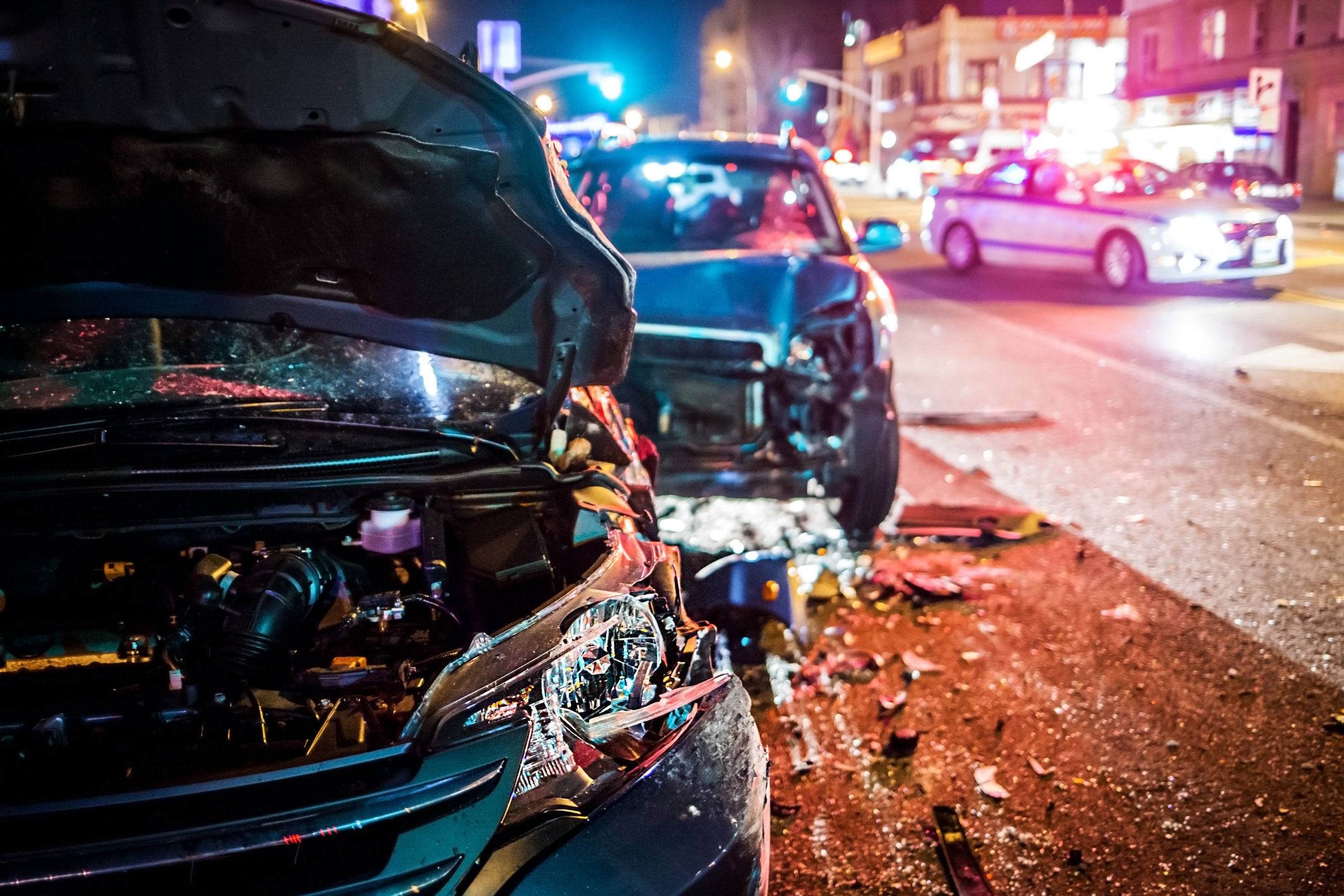
New York Car Accident Lawyer
Auto accidents are one of the most stressful experiences a person can go through. Vehicle damage can be costly, and medical bills from injuries can add up quickly. Your injuries may also prevent you from working, taking care of your family, or performing your other daily tasks.
If you’re facing lost wages and mounting bills from an auto accident, you may be wondering who should be responsible for your losses. In New York, your own auto insurance company will usually be your first stop for compensation. But in some cases, it’s also possible to pursue compensation from another party, such as an at-fault driver.
This guide will help you understand your rights in New York and how to get compensation for losses related to your injuries. Whether you’re pursuing compensation from your insurance company or another party, an experienced personal injury lawyer will help you get the maximum recovery possible. In all cases, it’s important to take action right away so you can get the full amount of compensation you deserve.
Auto accidents and personal injury overview
Auto accidents are extremely common. In fact, the average driver will get into 3-4 over the course of their lifetime. In rare cases, these accidents are unavoidable — for example, when a driver has a completely unexpected medical emergency like a heart attack. But according to the National Highway Traffic Safety Association, 94% of serious crashes are due to avoidable human error, such as:
- distracted driving (talking on the phone, texting, changing the radio, eating, putting on makeup, etc.),
- speeding or breaking other traffic laws,
- falling asleep at the wheel, or
- driving under the influence.
Even so, some states have a “no fault” auto insurance system. This means that regardless of who was at fault, you generally must turn to your own auto insurance company first for compensation. New York is one of those states.
To register your vehicle in New York, you must have personal injury protection, or PIP, insurance. PIP insurance is also called “no-fault insurance.” If you’re in an auto accident, your no-fault insurance will pay for your accident-related medical costs up to your policy’s limits. This is true even if the other driver caused the accident. No-fault insurance also covers certain other economic losses, including a portion of your lost wages and reasonable and necessary expenses (including household help and transportation to medical providers).
Unfortunately, in many cases losses resulting from an auto accident are much higher than the minimum insurance requirements in New York. If your losses exceed your insurance coverage, you may be able to get additional compensation from the at-fault driver and/or their insurance company. To confirm whether you have a valid claim, you should consult with a New York personal injury lawyer.
A lawyer can also help you deal with your own insurance company. Insurance companies have their own financial interests in mind, so it’s common for them to try to pay out as little as possible — even if your injuries are serious and the facts are clear. Since they deal with auto accident claims regularly, claims adjusters are also usually skilled negotiators. Without the help of a lawyer, it’s usually difficult to get fair compensation for your losses.
For more information about seeking compensation, see Getting Compensation From Your Insurance and Getting Compensation From an At-Fault Driver.
What to do after an auto accident
Auto accidents can be scary, shocking, and confusing. Especially if you’re injured, it’s not easy to think clearly right after an accident.
Still, it’s important to take the following steps. Taking these steps will help ensure you don’t miss important deadlines or evidence that you need in order to get compensation for your losses.
Common mistakes to avoid
In addition to the steps above that you need to remember to take, there are several missteps you should avoid. Below are a few mistakes victims commonly make after auto accidents. These actions could seriously damage your case and your ability to get proper compensation for your losses.
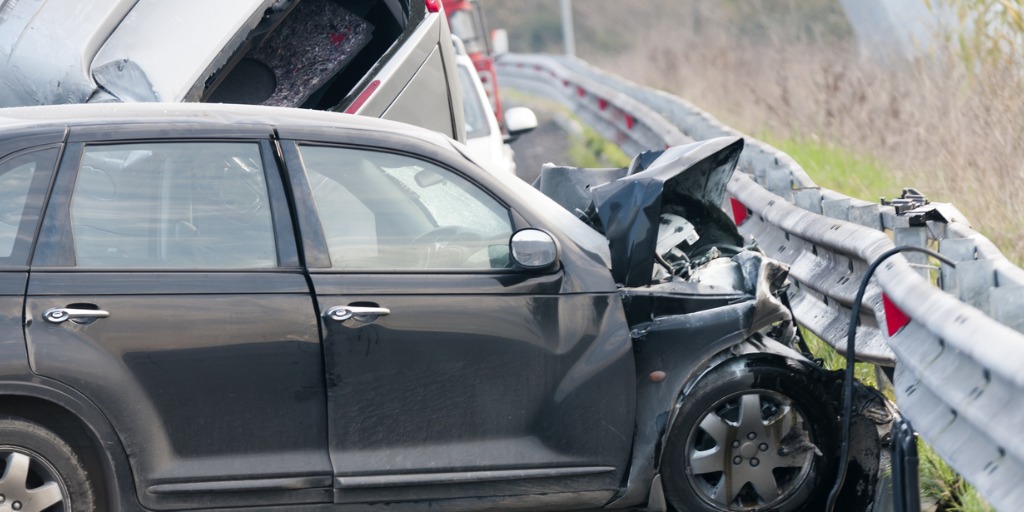
Case Study: $21 Million Award
What makes this case unique: Defense witness testified in favor of plaintiff; judge was a former Attorney General who had lost a substantial case to Mr. Rosenblum years earlier; Appellate Court actually increased the award amount.
Traffic tickets and auto accidents
Traffic violations play a role in many auto accidents. In fact, traffic tickets are often issued at the scene of an accident. Common violations include:
- Cell Phone Use (VTL 1225)
- Driving While Intoxicated (VTL 1192)
- Failure to Signal (VTL 1163)
- Failure to Yield (VTL 1140 – 1146a)
- Failure to Yield to a Pedestrian (VTL 1151)
- Following Too Closely (Tailgating) (VTL 1129[a])
- Leaving the Scene of an Accident (VTL 600)
- Moved from Lane Unsafely (VTL 1128(a))
- Reckless Driving (VTL 1212)
- Speed Not Reasonable and Prudent (VTL 1180(a))
- Speeding (VTL 1180)
In most cases, however, the officer issuing the ticket didn’t actually witness the alleged violation. They arrive on the scene after the accident occurred, and issue the ticket then. In New York, the fact that an accident happened is not enough by itself to prove that someone is guilty of a criminal or traffic violation. But if there were other witnesses to the violation or you admit guilt, it may be enough for a conviction.
This is why you shouldn’t admit to a traffic violation (including by paying the ticket) before discussing it with an attorney. Pleading guilty to a traffic violation could be used against you in a personal injury case to prove that you were at fault, at least in part. Pleading guilty to a lesser violation doesn’t change this problem. If you’re facing a traffic violation, you should consult with your attorney, who can help you determine the best course of action.
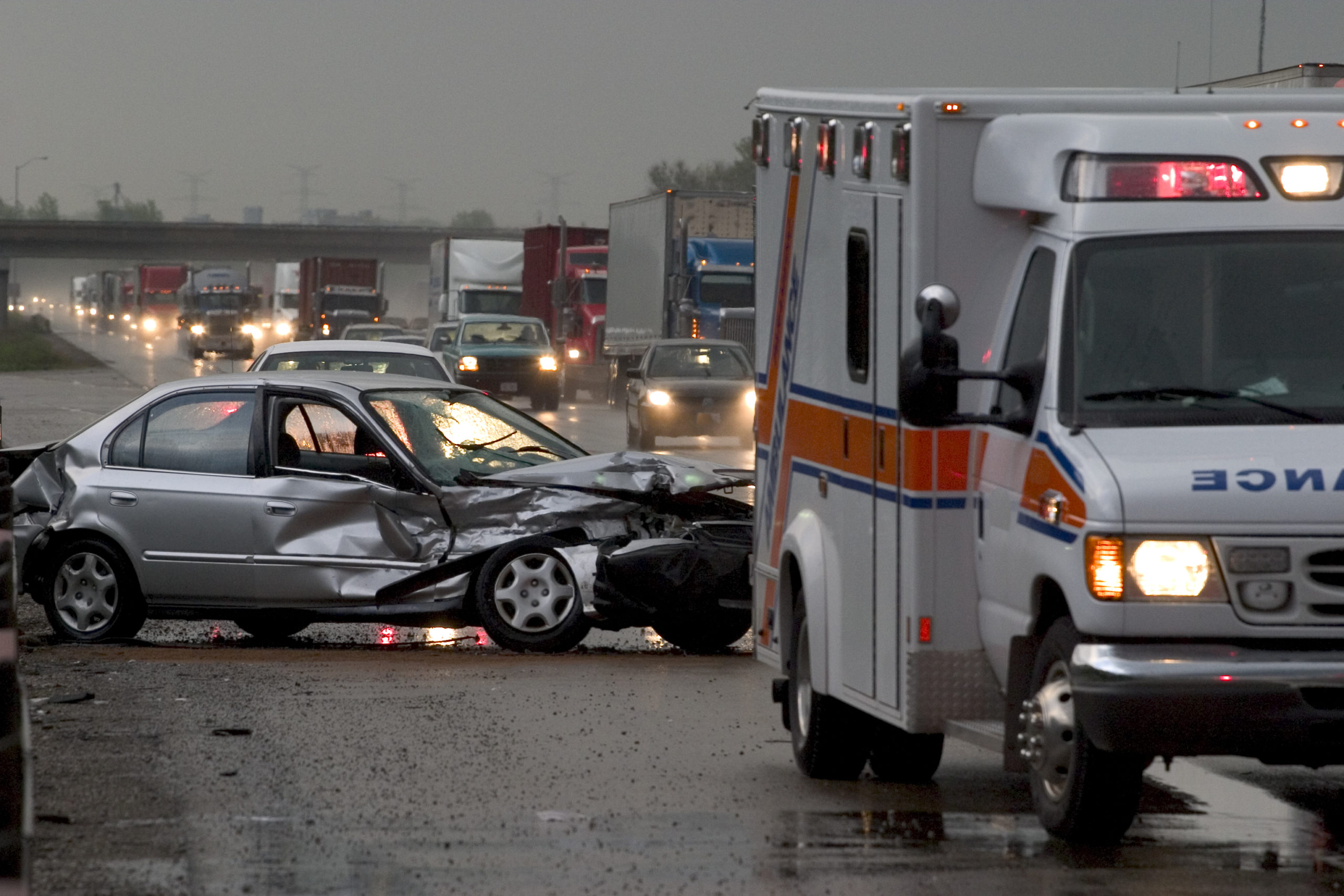
Common Types of Collisions & Injuries
Auto accidents can happen in many ways. Some are very minor, allowing you to walk away with no injuries at all. Others can be catastrophic, resulting in lifelong injuries or even death.
Below are a few common types of collisions and injuries. Understanding exactly how an accident happened and assessing the full extent of your injuries are important parts of your claim. For the best chances of getting full and fair compensation, you should work with a lawyer who’s familiar with the different types of collisions and resulting injuries.
Common types of collisions
A few common types of collisions are as follows:
Common auto accident injuries
The type of collision is often linked to the severity of your injuries. But even minor accidents can result in severe injuries. And while some injuries are obvious, others don’t become apparent until days or even weeks after the accident.
Some common injuries from auto accidents include:
- broken bones
- whiplash
- ruptured or herniated discs or other back injuries
- brain damage
- spinal cord injuries
- dismemberment
- burns
- lacerations and cuts
Many of these injuries require significant medical treatment — sometimes on an ongoing basis. You may have to spend time in the hospital, undergo surgery, or get physical therapy or rehabilitation. Injuries can also prevent you from working, taking care of your family, or performing your usual daily activities.
In other words, your expenses and losses from injuries can add up quickly. And it’s not easy to calculate the full financial impact on your own.
This is another reason to hire an experienced personal injury lawyer. A lawyer will be able to coordinate with the right medical experts to get a full understanding of your injuries and their immediate and long-term effects. They can then better assess your past and future losses and seek the appropriate amount of compensation.
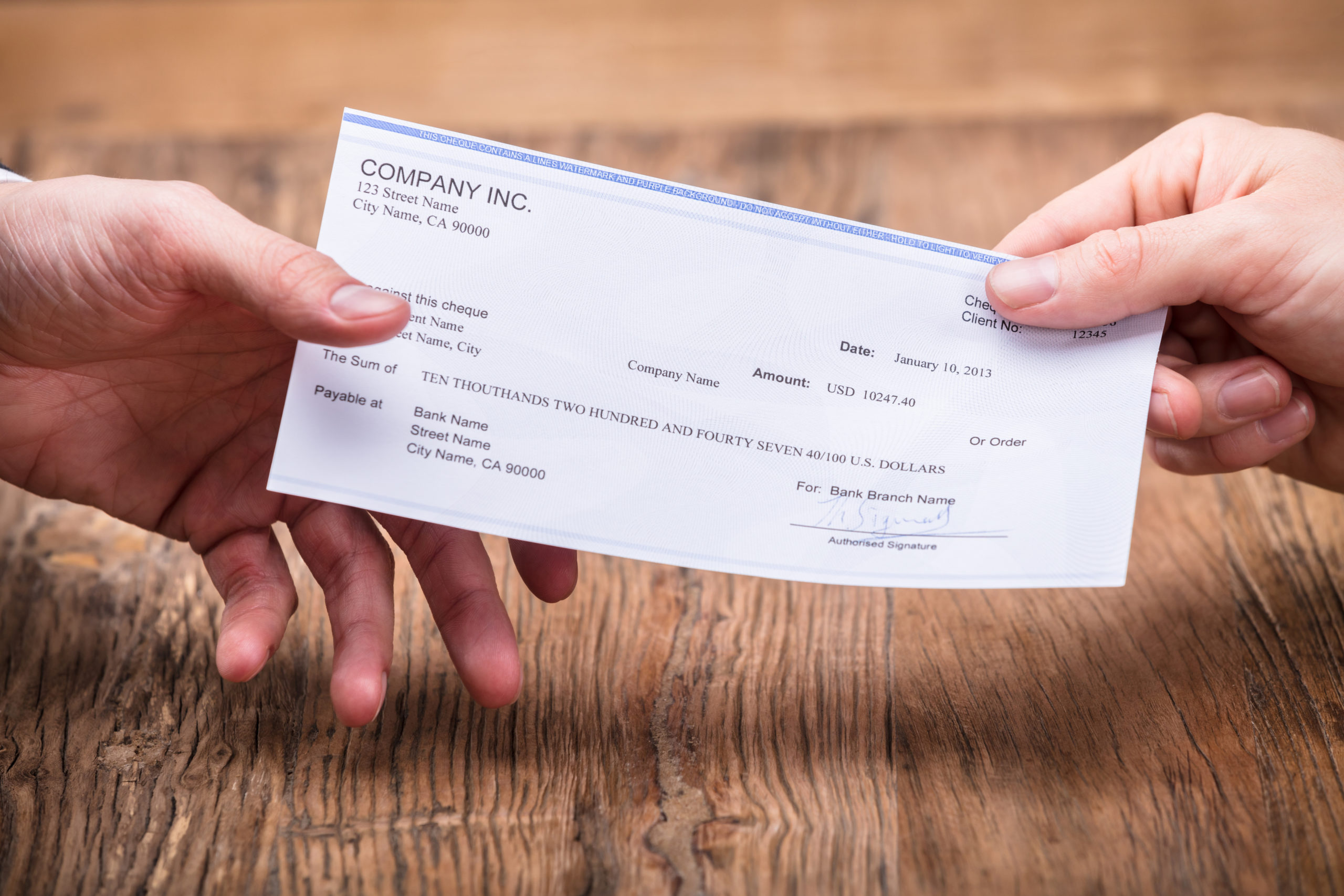
Getting Compensation Through Your Insurance
New York is one of a handful of states with a “no-fault” insurance system. This means if you’re injured in an accident, your own auto insurance company should generally be your first source of compensation. The amount you’re able to get from your insurer will depend on your no-fault policy’s coverage limit. Below is a summary of what you should know when pursuing compensation from your own insurance company.
The “no-fault” insurance system
Under New York’s “no-fault” system, if you’re injured in an auto accident as a driver or a passenger, you must seek compensation from the insurance company of the vehicle you were riding in. If you’re injured as a pedestrian, you should file a claim with the insurance company of the vehicle that hit you. This is true regardless of who was at fault.
If you’re injured as a pedestrian in a hit-and-run (or the vehicle that hit you was uninsured), you can seek compensation under your own auto insurance policy or the auto insurance policy of a family member who lives with you. If no one in your household has an auto insurance policy, you can file a claim with a special state fund called the Motor Vehicle Accident Indemnification Corporation (MVAIC).
In New York, you can only file a lawsuit against another responsible party in an auto accident if:
- your economic losses exceed your no-fault benefits, or
- you have a qualifying “serious injury” as defined under New York law.
See Getting Compensation from an At-Fault Driver.
Note that the no-fault auto insurance system only applies to injuries — not vehicle damage. You can file a claim for vehicle damage against an at-fault driver with no limitations in New York.
Losses covered under no-fault insurance
Basic no-fault auto insurance coverage generally pays for:
- Medical and rehabilitation expenses
- 80% of lost wages up to a maximum of $2,000 per month for up to three years from the date of the accident (less offsets for state disability, worker’s compensation, and federal social security disability benefits)
- Up to $25 per day for up to a year from the date of the accident to reimburse reasonable and necessary expenses such as transportation to medical providers and household help
- $2,000 death benefit payable to the estate of a person eligible for no-fault benefits who’s killed in an auto accident
No-fault coverage does not provide compensation for any non-economic damages like “pain and suffering.” In addition, under most policies you won’t be eligible for no-fault benefits if, at the time of the accident:
- You were driving while intoxicated or impaired by the use of a drug that contributed to the accident, subject to limited exceptions
- You intentionally caused your own injuries
- You were riding a motorcycle or an all-terrain vehicle (ATV) as an operator or passenger
- You were injured while committing a felony or while in a vehicle known to be stolen
- You were the owner of an uninsured vehicle
Minimum insurance requirements in New York
In New York, you’re required by law to keep a minimum amount of auto insurance on any vehicle registered and operated in the state. This includes:
Negotiating with insurance companies
When dealing with insurance companies, it’s important to remember that their own financial interests are their top priority. This means you can’t rely on them to offer fair compensation or provide you with advice.
They also deal with claims on a regular basis, so insurance adjusters tend to be experienced negotiators. To ensure that you don’t lose out on valuable compensation, it’s best to have a personal injury attorney deal with the insurance company on your behalf. At the very least, you should consult with an attorney before signing any documents, including detailed statements, medical releases, and especially settlement offers.
An attorney will help make sure that the insurance company handles your claim the right way. And if the insurance company refuses to provide a fair settlement, your attorney can file a lawsuit for you.
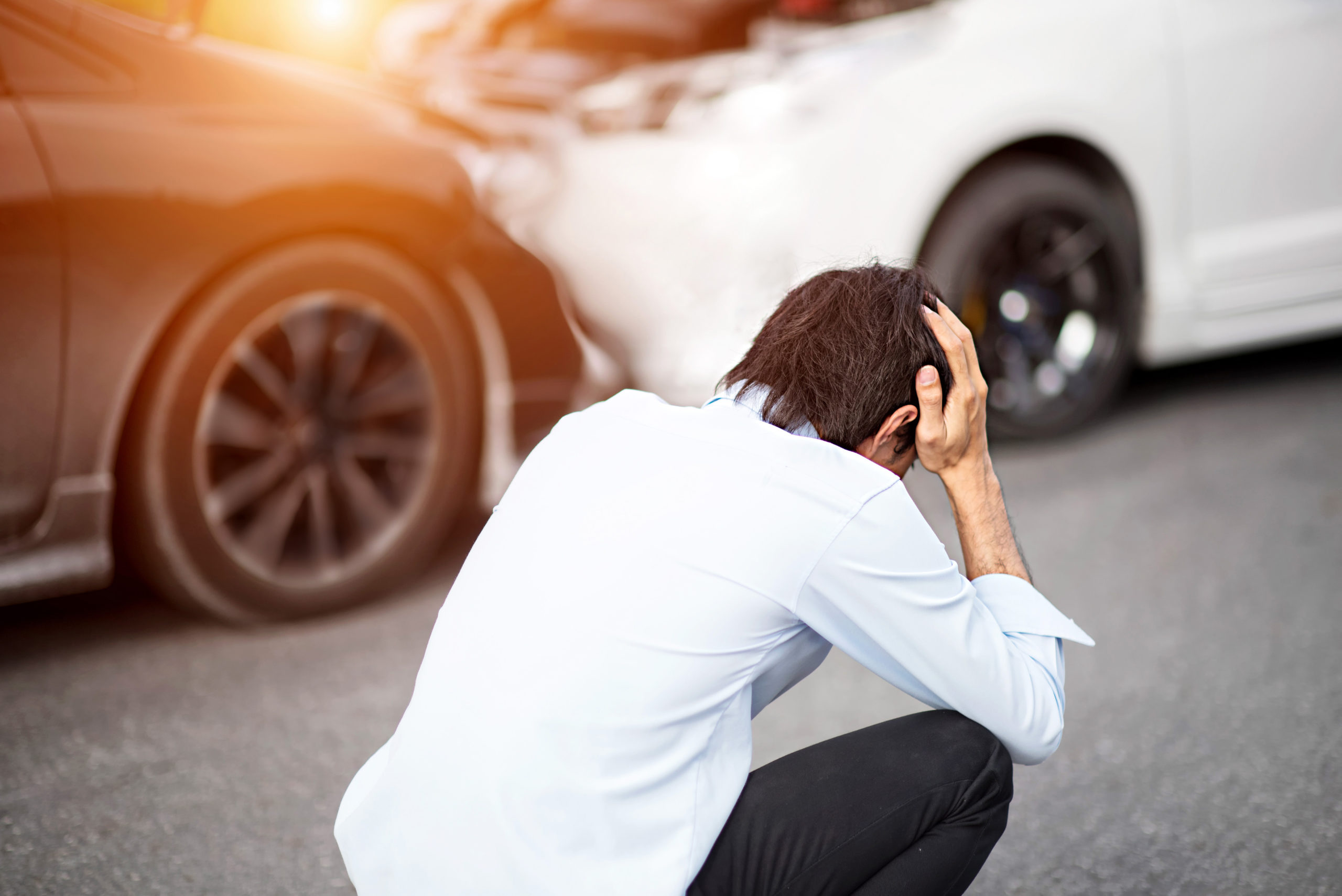
Getting Compensation from an At-Fault Driver
Expenses from an auto accident often far exceed no-fault insurance coverage. If this happens to you, you may be able to pursue further compensation from the at-fault driver (or his or her insurance company). You may also be able to sue an at-fault driver for non-economic damages like pain and suffering if you have a “serious injury” as defined under New York law.
In both of these cases, your claim would be a personal action — your insurance company wouldn’t be involved. Below is a summary of what you need to know when considering a claim against an at-fault driver.
“Serious injuries”
As noted above, it’s possible to sue an at-fault driver for non-economic damages like pain and suffering if you sustain certain serious injuries as defined under New York law.
Under New York Insurance Law § 5102(d), qualifying serious injuries include:
- death
- dismemberment
- significant disfigurement
- fracture
- loss of a fetus
- permanent loss of use of a body organ, member, function, or system
- permanent consequential limitation of use of a body organ or member
- significant limitation of use of a body function or system
- a medically determined injury or impairment of a non-permanent nature which prevents the injured person from performing substantially all of the material acts which constitute such person’s usual and customary daily activities for not less than 90 days during the 180 days immediately following the occurrence of the injury or impairment.
You’ll need to have objective medical evidence proving any serious injury. And the sooner you collect such evidence, the better. A personal injury attorney can help you determine if you have a qualifying serious injury, as well as collect the right evidence to support your case.
Statute of limitations
If you’re injured in an accident, you should consult an attorney and start the claims process as soon as possible. In New York you generally only have three years from the date of the accident to file a lawsuit, if needed. This time limit is called the “statute of limitations.” Certain defendants, such as municipalities, also generally require you to file a Notice of Claim within 90 days of an accident.
Once the statute of limitations has lapsed, if you try to file a lawsuit, the court will dismiss your case unless a rare exception applies. It doesn’t matter how strong your case would have been.
While three years may seem like plenty of time, working directly with insurance companies to get compensation may take longer than you think. In addition, the best evidence is often available right after an accident. So the longer you wait to take action, the weaker your case may be. Keep in mind that you also have to file any no-fault claim with your auto insurance company within 30 days.
Valuing a personal injury case
The circumstances around each case are unique, so the value of each case will also vary. But before you can accurately value your case, you have to reach “maximum medical improvement.” This means you’ve recovered completely, or as fully as your doctors think you’re likely to.
Some injuries have long-lasting or lifelong effects (such as pain, scars, disfigurement, or disability) or require ongoing treatment to prevent further problems or manage pain. By waiting to reach maximum medical improvement, you can reasonably establish costs of all past and expected future treatment.
You’ll also have to decide whether to pursue non-economic damages, such as pain and suffering. This will depend on the facts of your case, including the type and severity of your injuries. If your injuries cause a great deal of pain, distress, or long-term hardship, seeking compensation for pain and suffering may be appropriate. An experienced attorney can help you make this decision.
Proving a personal injury case
To win a personal injury case, you have to prove four things (called “elements”):
- You were injured;
- The party you’re suing had a duty to you;
- The party you’re suing breached that duty; and
- That breach of duty caused your injury.
All drivers have a duty to others on the road to drive safely and obey traffic laws. And a driver breaches that duty when they drive “negligently” or recklessly — that is, when they fail to act the way a reasonable or prudent person would have acted.
Examples of negligent behavior include speeding, distracted driving (including mobile device distraction such as texting), driving while fatigued, or driving under the influence. Insurance companies and juries in a lawsuit will look at all the evidence to determine negligence. This may include:
- photos or video of the accident
- police report details
- witness statements
- traffic camera or surveillance footage
- dashcam footage
- breath, blood, or urine test results for drugs or alcohol
- cell phone records (to prove that a party was on a call or texting during an accident)
- environmental factors like weather
Sometimes negligent road conditions also cause or contribute to an accident. In this case, the municipality or other party responsible for maintaining the road may also be responsible. Such issues may include, among others:
- damaged roadways, like potholes
- poorly placed traffic signs or signals
- broken signals
- poor lighting
- construction or debris
In New York, you have to follow special procedures to pursue claims against municipalities and other government entities. A New York personal injury attorney can help you navigate this process.
The “comparative fault” rule
New York is one of a few states that follows a “pure comparative fault” rule when more than one party is at fault for an accident. In most auto accident cases, the jury will have to calculate, based on the evidence:
- the total damages for the plaintiff, and
- the percentage of fault that each party is responsible for.
Under the pure comparative fault rule, as the plaintiff your damage will be reduced by a percentage equal to your share of the fault. As an example, if the jury finds that your losses equal $100,000 in damages and that you were 20% at fault, under New York’s rule you would get 80% of the damages, or $80,000.
Unlike in some other states that use a comparative fault rule, in New York you can recover damages even if you were more at fault than the other driver. For example, if your damages were $100,000 and you were 90% at fault, you could still recover $10,000 in damages. The flipside, of course, is that you could be responsible for 90% of the other party’s damages.
Note that insurance companies will also use the comparative fault rule when evaluating your case. To make sure that this rule is applied correctly by insurance companies or in a lawsuit, you should have an experienced personal injury attorney on your side.
The litigation process
After your initial consultation with an attorney, they’ll decide whether they’re able to take your case. If both you and the attorney decide to work together, the next step will be intake and investigation. During this phase, your attorney will interview you in detail and begin investigating your accident. They’ll then advise you on the best path forward.
If filing a lawsuit is the best option, here’s what you can expect:
It’s critical to have a personal injury attorney advocating for you throughout this entire process. They’ll be able to navigate all the complicated trial procedures on your behalf and gather evidence to support your case. Your attorney should also be able to identify the best experts and pay their fees, which will be reimbursed out of any compensation they win for you. Having the right attorney and the right experts can make a huge difference in the outcome of your case.
Settlements and mediation
Most personal injury cases are resolved outside of the court system through a settlement agreement. Settling a case can avoid the expensive and lengthy trial process, which means that all parties usually prefer this option. Settlements can take place among the parties themselves or through a process called mediation in which a qualified mediator is hired to attempt to bring the parties to a settlement agreement.
Still, insurance companies are often focused on protecting their financial interests above all else. They want to pay out as little as possible without going to court, which means they’ll resist offering a full and fair settlement.
One of the best ways to make sure you get the right amount of compensation through a settlement is to make it clear that you’re willing to go to court if needed. If an insurance company knows that you just want to settle and get it over with, they’ll take advantage by offering you a lower payout.
Even if you think you’ll reach a settlement agreement, you should still preserve your ability to sue if needed. If the insurance company refuses to provide a fair settlement before the statute of limitations expires, your attorney should file a lawsuit.
Filing a lawsuit does not prevent you from continuing settlement negotiations. You can agree to a settlement any time before the jury makes a decision in the case, even after a trial has started.
There are risks and expenses associated with going to trial, but sometimes it’s necessary. Your attorney can help you make the best decision about whether to accept a settlement offer or take your case to trial. Accepting a settlement offer is final and prevents you from pursuing the same claim in court. So you should be absolutely sure that the settlement is the right choice before accepting it.

Special Considerations by Vehicle Type
The type of vehicle involved in your accident often affects the severity of your injuries. It can also affect case strategy, as different laws apply in certain situations. Different types of accidents include:
- car accidents
- trucking or other commercial vehicle accidents
- bus accidents
- taxi or rideshare accidents
- motorcycle accidents
- pedestrian accidents
- bicycle accidents
Below are just a few of the special considerations you should keep in mind when certain vehicles are involved. An experienced New York personal injury attorney will be able to identify any special issues in your case and advise you on the best path forward.

Truck and other commercial vehicle accidents
Trucks and other commercial vehicles tend to be large and can cause a lot of damage and serious injuries in an accident. But getting the right compensation can also be trickier than usual. First, there are usually several parties involved, such as:
- the driver
- the owner of the vehicle
- the company leasing the vehicle
- the manufacturer of the vehicle and its parts
More than one of these parties may be responsible for the accident. Making this determination will likely require some industry knowledge and investigation. This is just one reason why hiring an attorney familiar with trucking or commercial vehicle accidents is important.
Your attorney will also help gather other evidence specific to these types of cases. For example, truck drivers are required to carry logbooks and other records regarding safety inspections, weigh-ins, and how long the driver has been behind the wheel. These records can serve as important evidence. An overweight truck, for example, may have been too heavy to stop as quickly as it should, causing an accident. Or a driver who has been behind the wheel for too long may have made a mistake because of fatigue.
In addition, your attorney will handle all communications with insurance companies and other third parties. Commercial vehicle insurance policies are usually very valuable. This means insurance companies will put their most highly skilled claims adjusters on these cases. The attorneys and investigators working for commercial vehicle companies tend to be very experienced as well. Going against these parties on your own is difficult. Hiring a lawyer will help ensure that you have an experienced advocate and negotiator on your side too.
As with any other kind of auto accident, you should not make any detailed statement (written or oral) to the insurance company before you’ve spoken to a personal injury attorney. You also shouldn’t accept any settlement offer or sign anything that the commercial vehicle company or insurer gives you. Instead, gather as much information and evidence as you can, including the police report, property damage records, medical records, and missed work records, and consult an attorney as soon as possible.
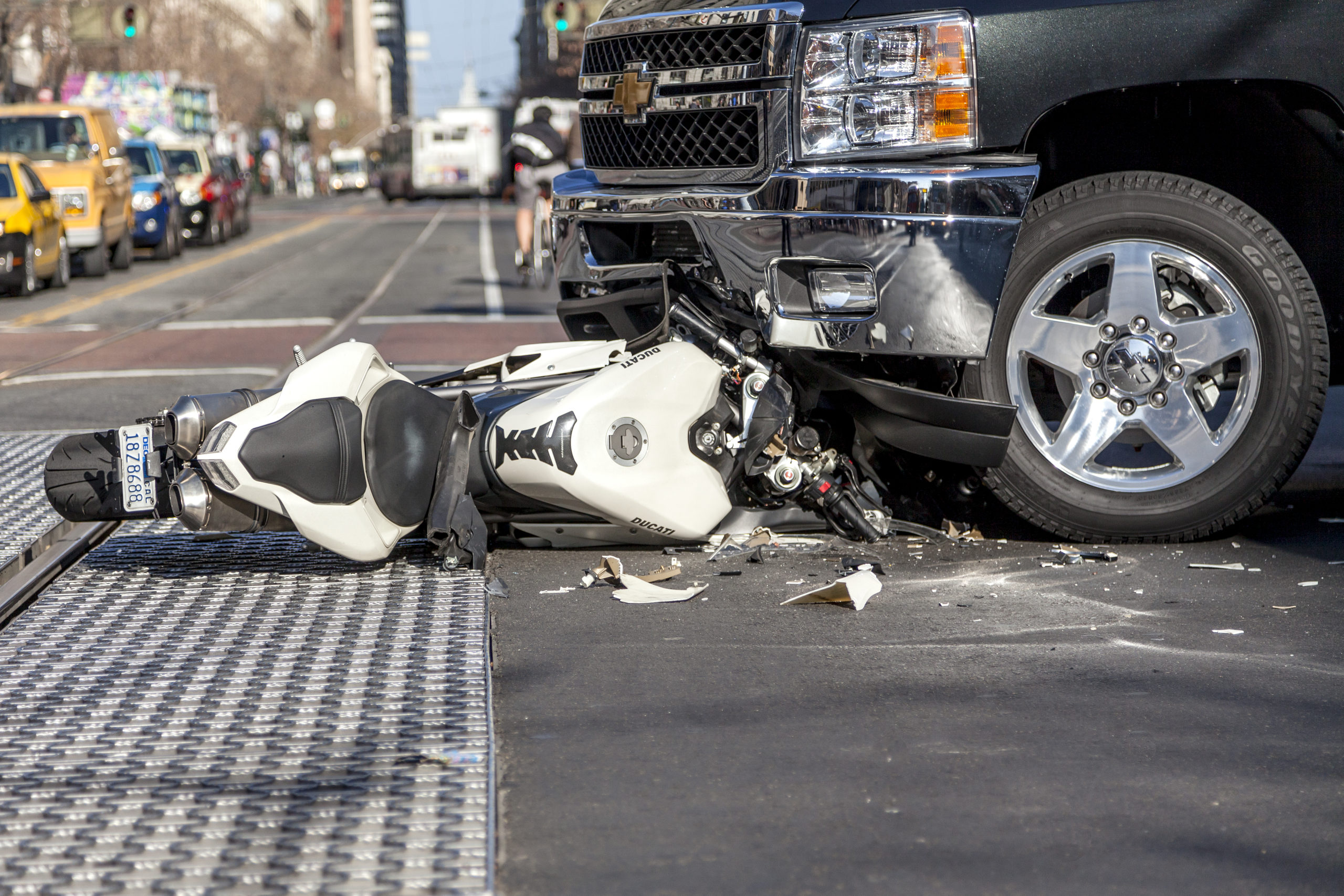
Motorcycle accidents
Motorcycle accidents can result in some of the most severe injuries, and related expenses can add up quickly. However, Section 5103 of New York’s No-Fault Insurance Law excludes occupants of a motorcycle from the no-fault insurance system. If you’re injured while on a motorcycle, you’ll have to use your health insurance, if any, to pay for expenses related to the accident. If you don’t have health insurance, you’ll be personally liable for your medical bills.
But being excluded from the no-fault insurance system also means that you have fewer restrictions when suing for damages. Unlike others injured in auto accidents, motorcyclists don’t have to have a “serious injury” as defined under New York law in order to sue for non-economic damages. You can sue an at-fault driver for any kind of damages for any type of injury.
Given these special rules, if you’re injured on a motorcycle you should contact a New York personal injury attorney right away. Your attorney will help identify all potential sources of compensation, such as pursuing a claim against an at-fault driver.
Keep in mind that even if you have a valid claim, it may take time, sometimes even years, to actually recover that compensation. In the meantime, unfortunately you’ll be responsible for shouldering the financial burdens that come from the accident.
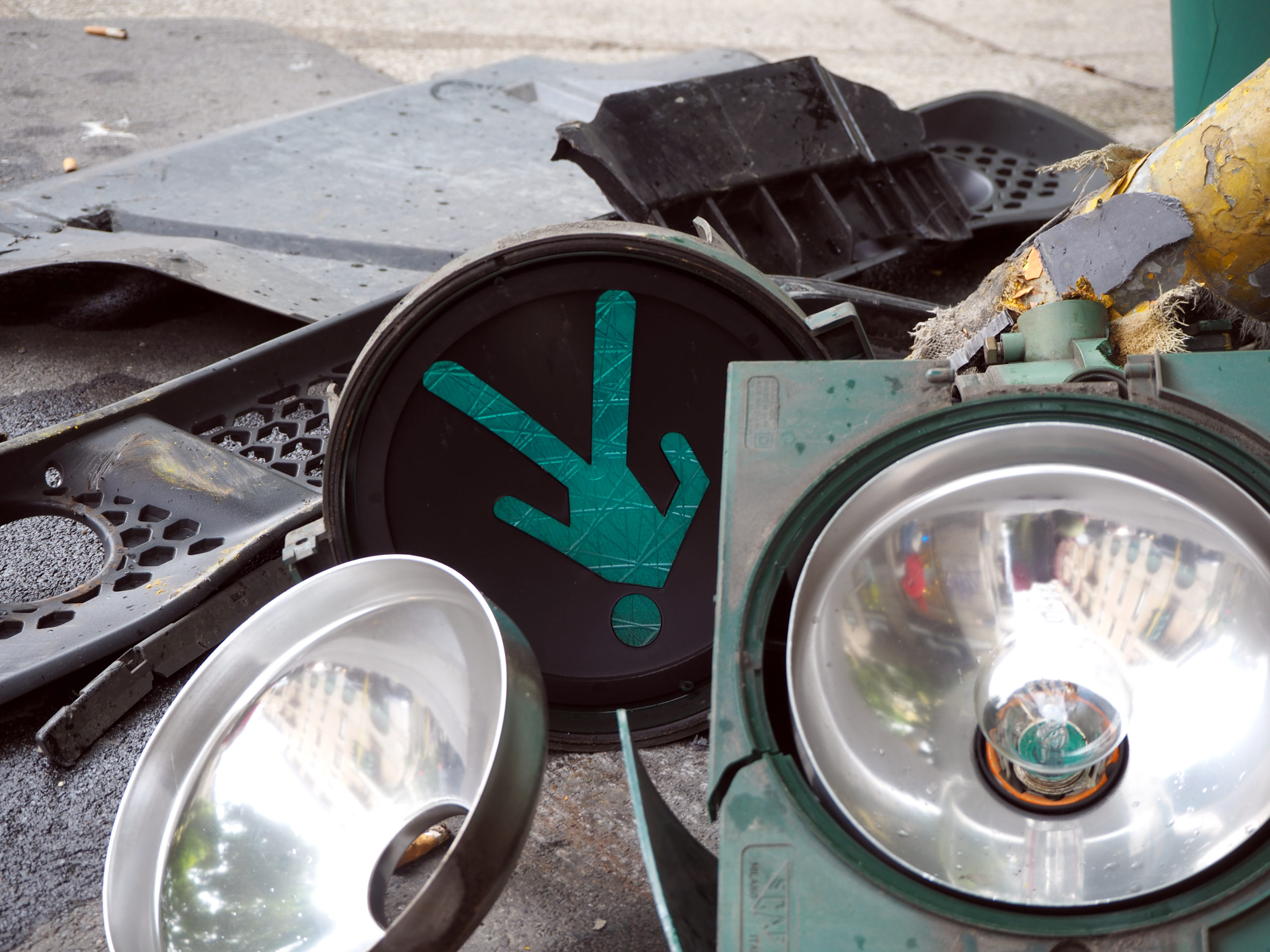
Pedestrian accidents
Pedestrian accidents are another type of accident that can result in some of the most serious injuries. If you’re injured as a pedestrian, you can seek compensation from the vehicle’s no-fault insurance for economic losses like medical bills, lost wages, and other expenses. But you have to file the claim within 30 days — which means you have to find out the insurance information immediately. Otherwise, you could lose out on compensation. You can also sue if your economic losses were greater than the no-fault policy limits, or if you have a qualifying serious injury under New York law.
In a hit-and-run situation or if the driver is uninsured, you can seek compensation from your own uninsured motorists coverage. If you don’t have your own auto insurance policy, you can file a claim with the insurer of a household family relative who had an auto insurance policy at the time of the accident.
If none of the above options are available to you, a special state fund called the New York Motor Vehicle Accident Indemnification Corporation (MVAIC) may be a source of compensation. MVAIC claims have many requirements, including calling the police within 24 hours, getting a police report, and filing an application.
As with other types of auto accidents, New York’s comparative fault rule applies to pedestrian accidents. That means if you were partially at fault for a pedestrian accident, your damages in a lawsuit will be reduced by your percentage of fault. See Getting Compensation From an At-Fault Driver — The “comparative fault” rule.
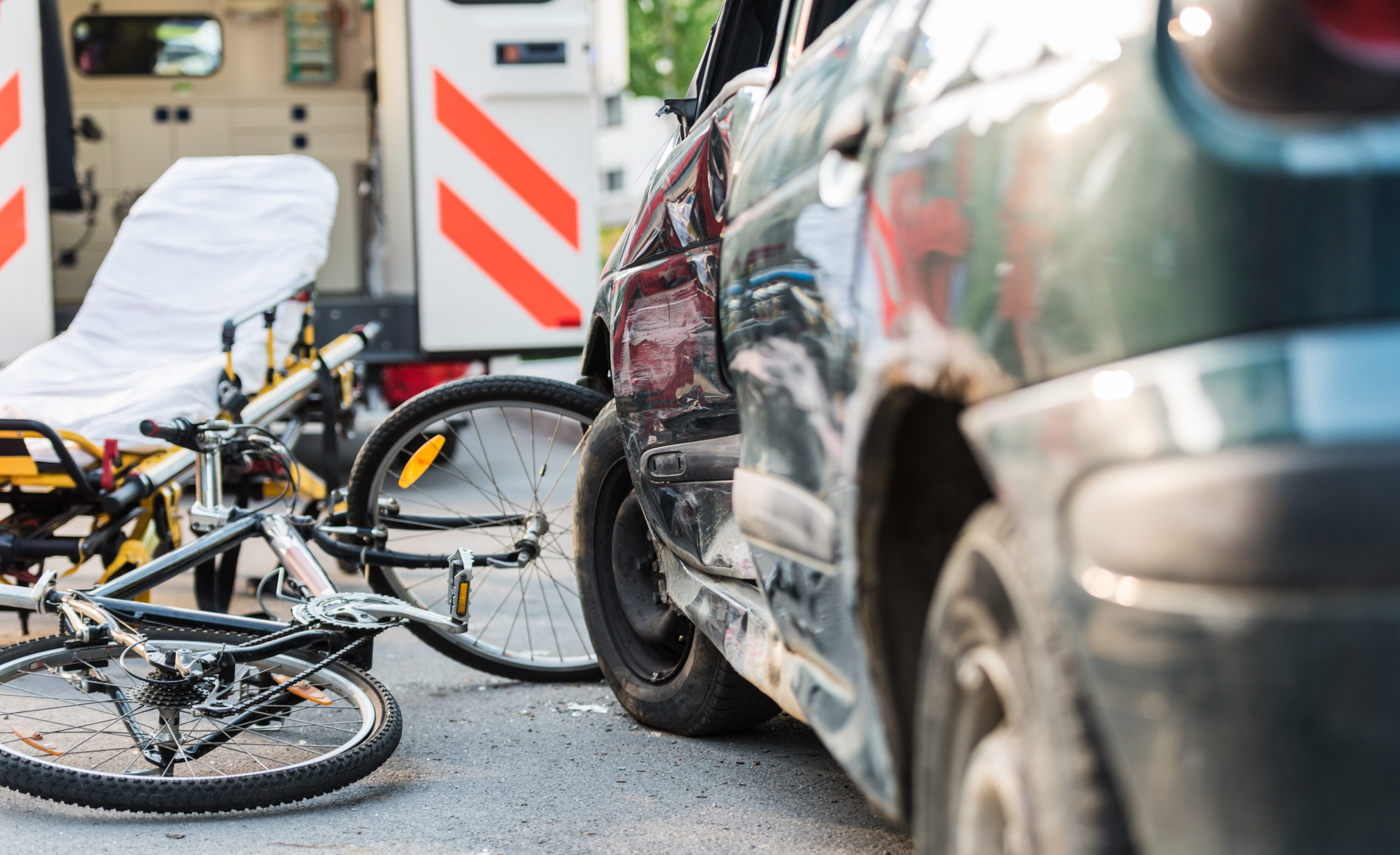
Bicycle accidents
Bicycle accidents can cause serious injuries or even death, especially if they involve a motor vehicle. “Dooring” is one type of accident in which the driver of a parked car opens his or her door in the path of a bicyclist. Drivers often forget that bicyclists are riding on the right side of the road and fail to check for oncoming cyclists before opening the door.
As in pedestrian accidents, if you’re hit by a vehicle while riding a bicycle, the insurer of the vehicle that struck you is responsible for paying your medical expenses, regardless of who was at fault. If the vehicle that struck you is uninsured or in a hit-and-run situation, you should file a claim with your own auto insurance company (or the auto insurance company of a family member you live with). If you’re not covered by any auto insurance policy, you may still be able to apply for compensation through a special state fund called the Motor Vehicle Accident Indemnification Corporation (MVAIC).
As in other types of accidents, New York’s comparative fault rule applies to bicycle accidents. If you were partially at fault for causing the accident, your damages in a lawsuit would be reduced by your percentage of fault. In New York, cyclists have the duty to follow the same traffic laws as drivers of motor vehicles. They also have to follow certain other special rules while on the road. For example, they must:
- Always keep at least one ear open so they can hear
- Use hand signals while turning and changing lanes
- Use bike lanes when available and safe
- Stay off the freeway
- Keep at least one hand on the handlebars
- Refrain from holding onto the back of a moving vehicle
But drivers also have duties to cyclists. For example, they must:
- Stay out of bike lanes
- Take care when getting out of the vehicle so as to avoid a “dooring” collision
- Communicate with cyclists when driving, including giving warnings when necessary
- Take care not to collide with cyclists
If your losses exceed no-fault benefits or you sustain a serious injury as defined under New York law, you may also be able to pursue a bodily injury claim or lawsuit against an at-fault driver. A New York personal injury attorney will be able to help you identify the best sources of compensation for your specific case.

Choosing a Lawyer
Pursuing a personal injury claim is a complicated process. To make sure you don’t miss out on valuable compensation, it’s important to get the help of an experienced personal injury attorney. Your attorney will be able to help you:
- identify all your potential sources of compensation for your injuries;
- deal with insurance companies and file paperwork within deadlines; and
- navigate the court process, if necessary.
What to look for in an attorney
Here are a few things you should look for when hiring a lawyer:
Your attorney should have a deep understanding of personal injury laws and insurance procedures and how they apply to your situation. During your initial consultation, it’s a good idea to ask how long they’ve been practicing and how many cases they’ve handled.
An attorney who pays proper attention to your case is crucial. Otherwise, they may miss important details that could affect the outcome of your case. Ask during your initial consultation how you’ll be able to communicate with them if needed, and how long they typically take to return your messages. It’s best to get a feeling for how quickly they’ll respond to you before you hire them.
If you’re injured in an auto accident, consulting with a personal injury attorney is almost always a worthwhile investment. But unexpected fees are never welcome. When choosing a lawyer, be sure to ask about their fee structures. Keep in mind that it’s standard for personal injury attorneys to represent clients on a contingency fee basis. That means you won’t pay any attorneys fees up front. Instead, the attorney will only be paid if they get you compensation through a settlement or trial verdict.
Questions about auto accident injuries in New York?
At Rosenblum Law, we understand the life-changing effects auto accident injuries can have. We’ll help you understand all your options and determine the best course of action for your particular circumstances. If you have a claim, we’ll also guide you through the process and fight on your behalf for maximum compensation.
For a free consultation, call us today at 888-235-9021 or contact us through our website at www.rosenblumlaw.com/contact. We’re passionate about helping all our clients get the compensation they’re owed — and we won’t take a fee unless we win a settlement or verdict for you.
Frequently Asked Questions
If you’ve been injured in an auto accident, you likely have a lot of questions about your case. Below are answers to some common questions we receive about auto accidents in New York, but keep in mind that every case is different. If you’d like to discuss the specifics of your case, you’ll have to contact a New York personal injury attorney.
New York is a no-fault auto insurance state. That means that regardless of who caused an accident, your own auto insurance company should generally pay your medical bills and certain other economic losses up to your policy’s no-fault coverage limit.
If you don’t have your own auto insurance, you may be covered by the auto insurance policy of a family member you live with.
If your losses are more than the limits of your no-fault insurance coverage or you sustain “serious injuries” as defined under New York law, you may also be able to pursue compensation from the at-fault driver (or his or her insurance company). See Getting Compensation Through Your Insurance and Getting Compensation From an At-Fault Driver.
You should notify your insurance company of any accidents as soon as possible. This is likely required by your policy, and failing to do so could result in your insurer raising your rates or even canceling your policy.
But you should not give any more details than what’s required by your policy until you’ve spoken to a lawyer. Insurance companies are focused on protecting their bottom line, so they’ll be looking for reasons to reduce or deny your claim. It’s best to have a lawyer communicate and negotiate with your insurance company on your behalf. See Getting Compensation From Your Insurance — Negotiating with insurance companies for more information.
No matter how eager you are to resolve your case quickly and put it behind you, you should always consult with an attorney before accepting a settlement offer. Once you accept an offer, you will no longer be able to pursue your claim further.
Without the help of an attorney, it’s difficult to get a fair settlement offer. As noted above, insurance companies are looking out for their own financial interests, so it’s not unusual for them to undervalue damages or even deny claims.
Also keep in mind that to properly value your case, you’ll have to wait until you’ve reached “maximum medical improvement.” This means you’ll have to recover completely, or as fully as you’re likely to. If you accept a settlement before you can establish the costs of all past and any expected future treatment, you could lose out on valuable compensation.
A personal injury attorney can negotiate on your behalf and help you make the best decision about whether to accept a settlement or take the case to trial.
You should never admit fault to the other driver, the police, insurance companies, or anyone else. It’s not your responsibility to determine fault. And even if you think an accident is your fault, that might not be legally accurate. There also may be factors that contributed to the accident that you’re not aware of.
Minimizing your fault is important because New York has a “comparative fault” rule. That means that if you’re at least partially at fault, your damages in a lawsuit will be reduced by the percentage of your fault.
This is one of the many reasons you should get the help of a personal injury attorney. Your attorney will collect and evaluate evidence and ensure that fault is properly assigned in your case. See Pursuing Compensation from an At-Fault Driver — The comparative fault rule.
When assigning fault, insurance companies and juries in a lawsuit will look at all the evidence. This can include:
-photos or video of the accident
-vehicle damage and repair details
-police report details
-witness statements
-traffic camera or surveillance footage
-dashcam footage
-breath, blood, or urine test results for drugs or alcohol
-cell phone records (to prove that a party was on a call or texting during an accident)
New York uses what’s called the “comparative fault” rule, so it’s possible that more than one party may be found at fault. Under this rule, if you were partly at fault, your damages are reduced by the percentage you were at fault. See Getting Compensation From an At-Fault Driver — The “ comparative fault” rule.
In New York, plaintiffs generally have three years to file a personal injury claim. This is called the “statute of limitations.” Once the statute of limitations has passed, the court will likely dismiss your case if you try to file a lawsuit.
Note that this means you have to start the lawsuit within three years of the date of your auto accident. The case can be resolved much later. See Getting Compensation From an At-Fault Driver — Statute of limitations.
Most cases will settle out of court. The stronger your case, the less likely you’ll have to appear in court. But your case may still go to trial if the insurance company refuses to provide a fair settlement. A case may also go to court if there are issues around fault or evidentiary problems.
There are, of course, costs associated with going to trial. Your attorney will be able to assess the benefits and disadvantages of going to trial and advise you on the best path forward. See Getting Compensation From an At Fault Driver — Settlements.
There are two types of damages:
-Economic losses, such as medical bills, lost wages, and property damage
-Non-economic damages, such as pain and suffering
Non-economic damages are more complicated to calculate and win, as they’re meant to compensate you for a reduced quality of life as a result of the accident.
There’s no standard amount that you can get for auto accident injuries. The type and amount of compensation you can get in a personal injury case depends on a variety of factors. These include, among others:
-the severity of your injuries
-how long it took you to recover
-past and future medical expenses, including emergency medical treatment and rehabilitative care
-past and future lost wages
-the degree to which to you were at fault in the accident
-insurance policy limits
-available evidence
A New York personal injury lawyer will help you evaluate the evidence and engage the right experts to determine the right amount of compensation to pursue.
The timeframe for resolving a personal injury case can vary greatly. If your case is particularly strong, it may settle in a couple of months. Other cases can take several months or even years if they go to trial. Cooperation among all parties is important for a speedy resolution. That includes the insurance companies, police, witnesses, and the parties to the accident.
If you were injured in an accident where the other driver immediately disappeared (or gave false information and left), you can look to your own auto insurance policy’s uninsured motorists coverage for compensation. Uninsured motorist coverage is required in New York.
If you don’t have your own auto insurance policy, you should look to the policy of a family member who lives with you. If you’re not covered by any policy, the Motor Vehicle Accident Indemnification Corporation (MVAIC) may be a source of compensation.
If your loved one died in an auto accident, you may have a wrongful death claim against the other driver. When someone you love dies, it can take a huge toll on you emotionally and financially. An attorney can help you get fair compensation from the parties responsible so that you can begin to heal and feel more secure in your future.

